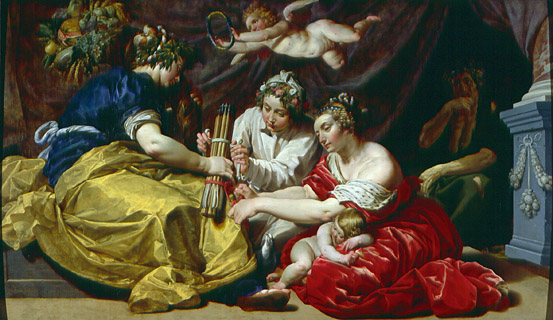Today is International Day of Peace so this week’s appropriately pacific picture is Abraham Janssen’s monumental allegory, Peace and Plenty Binding the Arrows of War, which is owned by Wolverhampton Art Gallery but is currently on long-term loan to the Barber Institute in Birmingham. Janssen, who once rivalled his great contemporary Pieter Paul Rubens in fame and success, competing for the pick of the commissions in the wealthy city of Antwerp, had subsided into obscurity by the early years of the nineteenth century. He remains an undeservedly neglected figure. The picture reproduced on this page is the only example of his work to be found in a British collection.
Peace and Plenty Binding the Arrows of War was commissioned and paid for by the Antwerp Guild of Old Crossbowmen, the principal militia company in Janssen’s native city, and it once hung over a mantelpiece in the guild’s Assembly Room – a building which still stands, albeit much altered, on the Grote Market in the centre of the old city, near the splendid late Renaissance Town Hall. It was painted in 1614, the same date as the picture which originally hung opposite it, Rubens’s Crowning of the Victor (which is now to be found in the Gemaldegalerie at Kassel). Between them the paintings symbolised, to a select group of the burghers of Antwerp, military fortitude guaranteeing peace with all its advantages.
Janssen’s allegory is closely based on a description of how the benefits and blessings of peace might most appropriately be depicted, which is to be found in Cesare Ripa’s sixteenth-century Iconologia – the indispensable handbook of subjects and symbols for every aspiring Baroque narrative painter. According to Ripa, Concord should be embodied as “A woman with an olive wreath, holding in her right hand a sheaf of...


